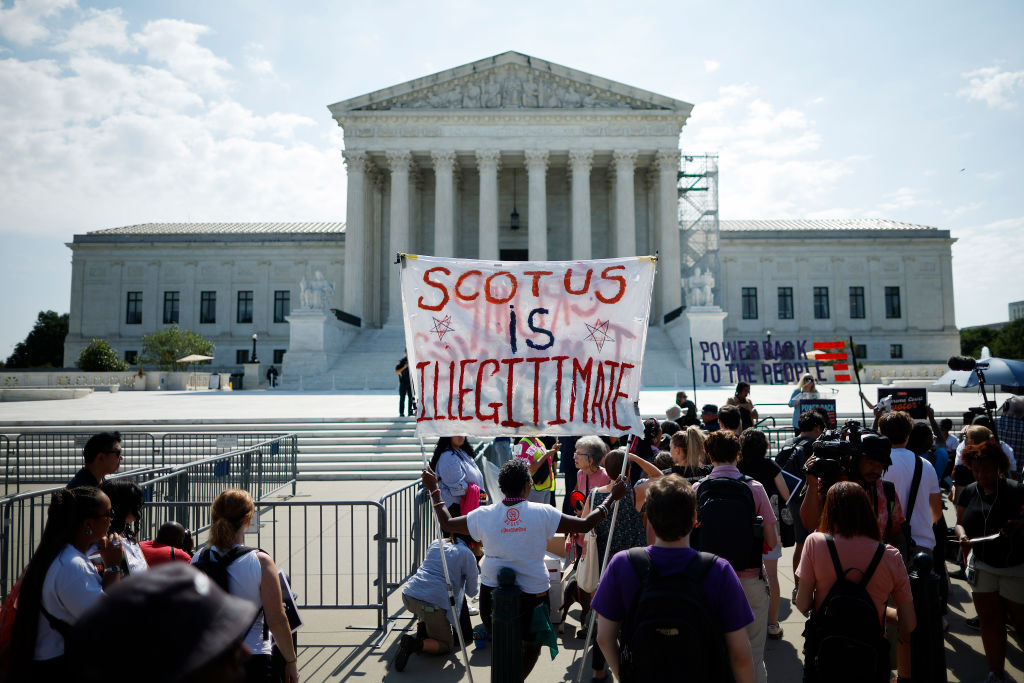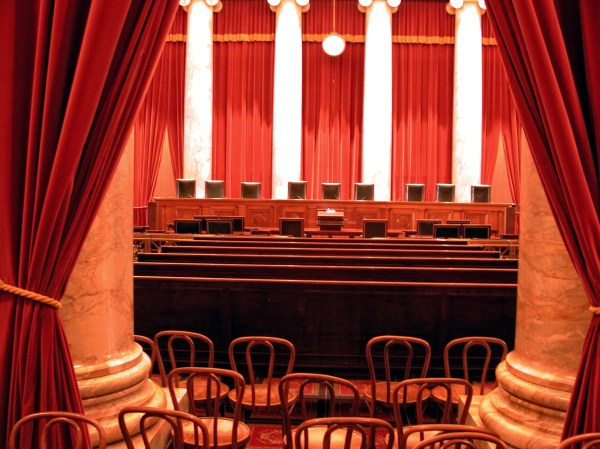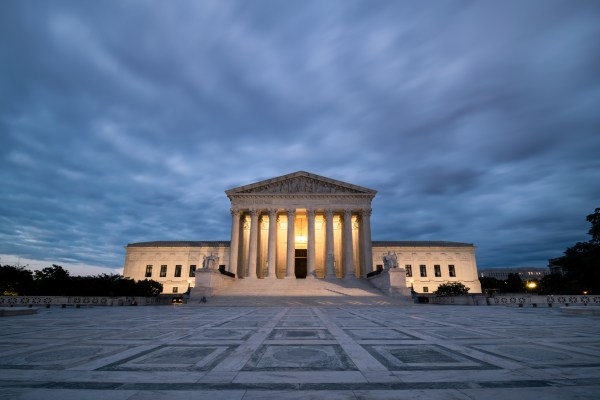In 2020, just days before his election, President Joe Biden rebuffed calls to radically change the Supreme Court by packing it with additional justices. But four years later, Biden is calling for legislation to strip current justices of their duties and appoint new justices. After rightly criticizing court-packing throughout his career, pursuing it now would be a terrible mistake.
I have studied these issues for two decades, most recently as a member of the Presidential Commission on the Supreme Court of the United States, to which the president appointed me in 2021. For a year, my colleagues and I studied the history of political controversies around the court and discussed proposals to restructure it, such as packing it with new members, imposing term limits on justices, and other efforts to disempower members of the court.
Outright court-packing—adding extra justices simply to dilute the current justices’ votes—has been an infamy since 1937, when Congress rejected President Franklin Roosevelt’s attempt to pack the court into obeisance. In 2005, then-Sen. Biden remarked that FDR’s war on the court exemplified the adage, “Power corrupts, and absolute power corrupts absolutely.”
But now, frustrated by several decisions from the court’s current justices, some want court-packing by another name: a new framework to strip current justices of their constitutional responsibilities and transfer those powers to successors, one justice at a time, beginning with Justice Clarence Thomas.
To be sure, any legislation purporting to strip individual justices of their duties would be unconstitutional. The Constitution guarantees that all justices and federal judges “shall hold their Offices during good Behaviour.” Once appointed by the president with the Senate’s confirmation, a justice holds office until he or she retires, dies, or is removed by the Constitution’s impeachment process.
From the start, this has been recognized as life tenure—“permanent tenure of judicial offices,” Alexander Hamilton called it, to ensure “the faithful performance of so arduous a duty.” And a justice’s permanent tenure puts enormous weight on the president’s and Senate’s consideration of his appointment in the first place. As Sen. Biden told John Roberts at his 2005 confirmation hearing, “The Constitution provides for one democratic moment, Judge, one democratic moment before a lifetime of judicial independence.” (He repeated this, nearly verbatim, at Samuel Alito’s confirmation hearing.)
And indeed, that is the point of each justice’s life tenure: judicial independence. My colleague on the commission, constitutional scholar Laurence Tribe, put it well in his 1985 book, Constitutional Choices: The Constitution’s “relatively unambiguous language” provides, “as institutional safeguards of judicial independence, that the judges of all such courts shall have life tenure during good behavior and be immune from reductions in salary.” In recent years, as the Supreme Court’s decisions ceased to meet his approval, Tribe became the leading advocate for court-packing. But 40 years ago he could admit the obvious: The Constitution’s protection of life tenure is clear and crucial.
But now the court’s critics would negate judicial life tenure with judicial “term limits,” trying to remove inconvenient justices without the strict standards and procedures of outright impeachment. In the 1970s, for example, Virginia Sen. Harry Byrd, arch-critic of the Supreme Court’s decisions on school desegregation and other issues, alleged “widespread dissatisfaction with the existing system, under which some judges are exercising dictatorial powers.” To change the courts’ personnel at all federal levels, the Virginian introduced legislation setting eight-year term limits for federal judges.
Newer proposals to end judicial tenure have been better camouflaged, if just barely. One approach would impose term limits that would nominally leave a justice on the court but strip him or her of the core constitutional role of hearing appeals from the lower federal courts and state courts—with the title of “senior justice,” no longer an “active justice.” The disempowered “senior justice” could still hear interstate disputes over water rights and other relatively mundane matters on the court’s tiny “original jurisdiction” docket but would cease to be a real Supreme Court justice.
The name gives it away, of course. They call it “term limits,” not “active-status limits,” precisely because the point is to end the justice’s term as a real “justice” as the office as been understood for more than two centuries.
And it is just court-packing by another name. If anything, the new proposals for disempowering “senior” justices are even more aggressive than the original version of court-packing: FDR tried to add new justices, but he never even attempted to nullify current justices.
As it happens, I came to the commission open-minded to judicial term limits by constitutional amendment. After all, there are superficially plausible reasons for them. First, the wonders of modern medicine now extend a judge’s lifespan much longer than in the 1780s, enabling the average justice to serve decades longer than before, putting even more political pressure on each nomination to fill a vacancy.
Second, it might seem unfair—at first glance—that one president may appoint three justices in a single four-year term, while another may appoint just two justices over eight years. One stated goal of such reform, we recognized, is to “ensure that all Presidents have the opportunity to appoint two Justices to the Supreme Court” every four years. I knew that such reforms would need a constitutional amendment, but I was willing to consider the question.
But a year spent studying these issues, and discussing them with my fellow commissioners, made clear the constitutional costs of judicial “term limits,” even setting aside the need for a constitutional amendment to enact them.
First, guaranteeing that each president gets two new justices would officially make the court a new kind of presidential election “spoils” system. True, the possibility of Supreme Court appointments is an increasingly prominent part of presidential politics. Still, we’ve never gone so far as to officially treat Supreme Court seats like Oval Office couches—automatically delivering two new ones to the White House on Inauguration Day.
Second, we should not encourage justices to spend years wondering about their post-judicial job prospects.
Third, as our commission documented, guaranteeing two new Supreme Court appointments every four years would inevitably force a reduction in the Senate’s own power, since the Constitution requires the president to seek Senate “advice and consent” before appointing a justice. Because the Senate can (and often does) refuse to confirm particular Supreme Court nominations, the only way to guarantee two new justices per four-year presidential term is to let the president eventually bypass the Senate altogether, if the Senate rejects the president’s first nominees. The Presidential Commission’s report explains this in painful detail.
But the last and biggest problem should be even more obvious in our era of retributional politics. Each time an election shifts the presidency and Congress from one political party to the other, the winners could make another round of legislative changes in the opposite direction.
Say a president and Congress actually enacted something like the recent proposal: adding a new justice every two years, making the senior incumbent justice a largely inactive “senior justice,” and letting only the nine most junior justices hear constitutional issues and other appeals. After an election, the next president and Congress could simply flip it on its head: amending the legislation to shift power back to senior justices, stripping power from the newer justices, and making junior-varsity justices wait on the back bench for a few years’ seasoning.
If we pretend that the Constitution does not prevent a president and Congress from transferring power from one subset of justices to another, then the opportunities for political shamelessness are endless. Why not gerrymander legislation around justices in the middle of the court? If Donald Trump were elected president this fall with a Republican Congress, its members could enact legislation requiring justices to take a four-year “sabbatical” from constitutional appeals after 15 years on the court. So long, Justices Sonia Sotomayor and Elena Kagan.
This is exactly what senators renounced when they rejected FDR’s court-packing plan 87 years ago. “If we yield to temptation now to lay the lash upon the Court, we are only teaching others how to apply it to ourselves and to the people when the occasion seems to warrant,” they wrote. “Manifestly, if we may force the hand of the Court to secure our interpretation of the Constitution, then some succeeding Congress may repeat the process to secure another and a different interpretation and one which may not sound so pleasant in our ears as that for which we now contend.”
And it is exactly what the founders renounced when they wrote and ratified the Constitution in the first place, to take judicial independence out of politicians’ and political activists’ creative hands.
In remarks on court-packing over the years, then-Sen. Biden often repeated the FDR-era senators’ warning against trying to thwart the Constitution’s clear words with semantic games—“the futility and absurdity of the devious.” President Biden should continue to heed their warning.







Please note that we at The Dispatch hold ourselves, our work, and our commenters to a higher standard than other places on the internet. We welcome comments that foster genuine debate or discussion—including comments critical of us or our work—but responses that include ad hominem attacks on fellow Dispatch members or are intended to stoke fear and anger may be moderated.
With your membership, you only have the ability to comment on The Morning Dispatch articles. Consider upgrading to join the conversation everywhere.